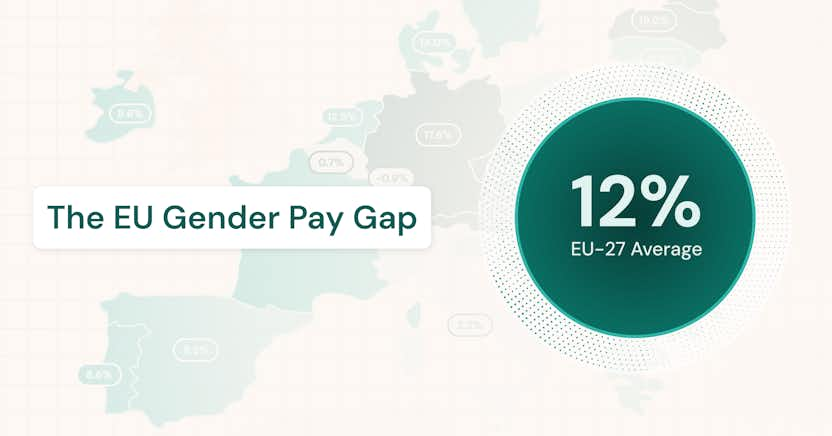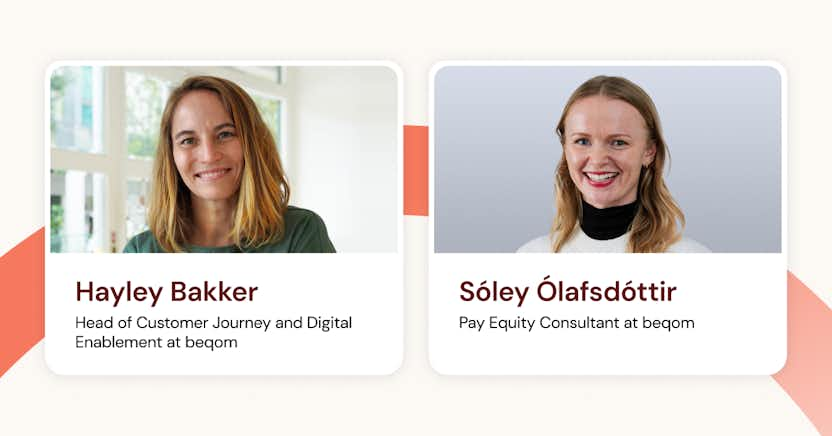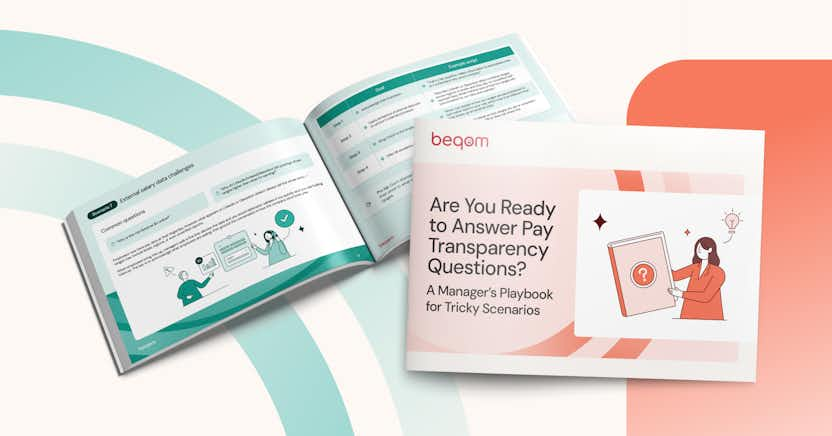The Ultimate Performance Improvement Plan (PIP) Guide

Learn more about the following beqom products
Today’s competitive business landscape requires companies to strive for excellence to stay ahead. A key component of achieving such excellence is making sure every employee performs at their highest potential. When performance issues arise, addressing them promptly and constructively is essential. This is where performance improvement plans (PIPs) come in handy.
This article will help you understand what a performance improvement plan is, its benefits, when and how to implement it, and how leveraging our solutions can maximize its impact. Whether you're an HR professional, a manager, or an employee seeking to understand the process, this guide offers valuable insights into creating and executing an effective employee improvement plan.
What is a performance improvement plan (PIP)?
A performance improvement plan (PIP) is a formal document that outlines specific steps an employee needs to take to improve their performance. It serves as a structured approach to address performance issues by setting clear expectations, providing resources, and establishing a timeline for improvement. But what is a performance improvement plan in practice?
In essence, a PIP is a collaborative effort between an employee and their manager, often facilitated by HR, to identify areas of concern, set measurable objectives, and provide the necessary support for improvement. It is not merely a punitive measure but a developmental tool designed to help employees meet or exceed job performance standards.
Key components of a PIP include:
- Clear identification of performance issues: Specific details about where performance is lacking.
- Measurable objectives: Goals that are Specific, Measurable, Achievable, Relevant, and Time-bound (SMART).
- Timeline for improvement: A set period during which the employee is expected to show improvement.
- Resources and support: Training, coaching, or other support mechanisms provided to the employee.
- Consequences: Explanation of potential outcomes if improvement is not observed.
By understanding what a performance improvement plan is, organizations can use it effectively to enhance performance and foster a culture of continuous improvement.
Benefits of performance improvement plans
Implementing a PIP offers numerous benefits for both the organization and the employee. Let's explore these advantages in detail.
1. Aids employee engagement
A well-designed PIP can significantly improve employee engagement by demonstrating the organization's commitment to the employee's success. Employees who receive constructive feedback and support feel valued and are more likely to be motivated and engaged in their work.
Engaged employees are known to exhibit higher productivity, better customer service, and increased loyalty to the company. For strategies on boosting engagement, refer to our article on 3 Simple Ways to Improve Employee Engagement Right Now.
2. Improves retention
High turnover rates can be costly and disruptive. By proactively addressing performance issues through a PIP, organizations can improve retention by helping employees overcome challenges rather than resorting to termination. This approach not only saves on recruitment and training costs but also preserves institutional knowledge and maintains team stability.
3. Increases accountability
A PIP establishes clear expectations and responsibilities, thereby increasing accountability. Employees understand precisely what is expected of them, and managers have a transparent framework to assess performance. This mutual understanding fosters a culture of responsibility and integrity.
4. Provides targeted guidance
Performance issues often stem from specific skill gaps or misunderstandings. A PIP offers targeted guidance by pinpointing these areas and outlining precise steps to address them. This personalized approach ensures that the employee receives the support they need to succeed, whether through additional training, mentoring, or resources.
Organizations can streamline this process by leveraging tools like beqom's performance management software, making it more efficient and effective.
Why employees could need a PIP
Understanding the reasons behind performance issues is crucial in crafting an effective PIP. Here are some common factors that might necessitate an employee improvement plan:
1. Drop in performance
A noticeable decline in work quality, productivity, or efficiency may indicate underlying issues. This drop could result from various factors, such as changes in job responsibilities, personal problems, or lack of motivation. Addressing it promptly through a PIP helps prevent further decline and sets the stage for improvement.
2. Poor work ethic
Behaviors such as frequent tardiness, absenteeism, missed deadlines, or lack of initiative can hinder team performance and morale. A performance improvement plan can help address these issues by setting clear expectations and consequences and encouraging the employee to adopt a more professional approach.
3. Personal stressors
External factors like family issues, health concerns, or financial difficulties can impact an employee's focus and performance. Recognizing these personal stressors and providing support through a PIP can help the employee navigate these challenges while maintaining their work responsibilities.
4. Misaligned values
If an employee's actions or attitudes conflict with the organization's core values or culture, it can create friction within the team. A PIP can help realign the employee's behavior with company values, promoting harmony and a positive work environment.
5. External distractions
Side projects, social media, or other external interests might distract an employee from their primary responsibilities. A PIP can assist in refocusing their attention on work priorities, ensuring that personal interests do not interfere with professional obligations.
By identifying the root causes of performance issues, managers can tailor the PIP to address specific needs, increasing the likelihood of a successful outcome.
When to implement a performance improvement plan
Timing is critical when implementing a PIP. Deploying it at the right moment ensures that it is seen as a supportive rather than punitive measure. Here are scenarios when a PIP is appropriate:
1. When performance issues persist
If informal feedback and coaching have not resolved performance problems, a formal PIP may be necessary. It provides a structured approach to address persistent issues and signals the seriousness of the situation to the employee.
2. During role transitions
Employees transitioning to new roles or responsibilities may struggle to adapt. A PIP can offer guidance and support during this period, helping them acquire new skills and meet the expectations of their new position.
3. After other interventions have failed
Sometimes, training sessions or mentorship programs may not yield the desired improvement. In such cases, a PIP serves as a more formal intervention, outlining specific steps and expectations.
4. When a project is impacted
If an employee's performance jeopardizes a project's success, immediate action through a PIP can mitigate risks. It ensures that performance issues are addressed promptly to prevent further negative impact on project deliverables.
5. As a preemptive measure
Proactively implementing a PIP when early signs of performance decline appear can prevent minor issues from escalating. This approach fosters a culture of continuous improvement and demonstrates the organization's commitment to employee development.
Understanding when to implement a performance improvement plan allows organizations to address issues effectively and maintain high-performance standards.
The potential impact of performance improvement plans
Implementing PIPs can have a profound effect on organizational performance and culture. But does performance management make a difference? The answer is a resounding yes.
1. Enhancing overall performance
Effective performance management, including the use of PIPs, leads to improved individual and team performance. Employees are better equipped to meet and exceed their goals by setting clear expectations and providing necessary support.
2. Fostering a high-performance culture
A consistent approach to addressing performance issues contributes to building a high-performance culture. Employees understand that excellence is expected and that support is available to achieve it. For insights on cultivating such a culture, explore our article on The 3 Pillars of a High-Performance Culture.
3. Improving morale and engagement
When performance issues are managed constructively, it can boost morale and engagement across the organization. Employees feel valued and supported, leading to increased job satisfaction and loyalty.
4. Reducing legal risks
Documenting performance issues and the steps taken to address them can protect the organization from potential legal challenges related to terminations or disciplinary actions. A well-documented PIP demonstrates fairness and due process.
By integrating PIPs into a broader performance management strategy, organizations can drive positive outcomes and foster a culture of excellence.
What should be included in a PIP?
Creating an effective PIP requires careful consideration of its components. Here's what should be included:
1. Purpose of the PIP
Begin the performance improvement plan by clearly stating its purpose. Emphasize that the plan aims to support the employee in improving performance and is a collaborative effort. This sets a positive tone and encourages buy-in from the employee.
2. Identification of performance issues
Provide a detailed description of the specific performance issues. Include examples, data, or feedback that illustrate the concerns. Clarity in this section ensures that the employee understands exactly what needs to be addressed.
3. Measurable objectives and goals
Set measurable objectives and goals that align with the organization's standards and the employee's role.
Here’s an example of a PIP objective:
- Improve sales performance: Increase monthly sales revenue by 15% within the next three months by implementing targeted sales strategies and customer follow-ups.
- Enhance project management skills: Successfully deliver the next three projects on time and within budget, with no more than two minor scope changes.
- Boost customer satisfaction: Raise customer satisfaction scores from 3.5 to 4.5 out of 5 within the next six months by improving response times and resolution effectiveness.
These objectives should be SMART - Specific, Measurable, Achievable, Relevant, and Time-bound, providing clear targets for the employee.
4. Timeline and duration of the plan
Outline the duration of the PIP, including start and end dates. Establish milestones or check-in points to review progress. The timeline should be realistic, allowing sufficient time for the employee to demonstrate improvement.
5. Employee acknowledgment
Include a section for the employee to acknowledge and agree to the PIP. This may involve signing the document or providing written confirmation. Acknowledgement ensures that the employee understands the expectations and agrees to the plan.
How to implement an employee PIP
Implementing a PIP requires careful planning and execution. Here are the steps to follow:
1. Identify performance issues
- Collect data: Review performance metrics, feedback, and evaluations to identify specific issues.
- Seek input: Consult with supervisors, colleagues, or clients who may have insights into the performance concerns.
2. Set objectives
- Define goals: Establish clear, measurable objectives that address the identified issues.
- Align with organizational goals: Ensure that the objectives support broader company goals and values.
3. Communicate expectations
- Schedule a meeting: Arrange a private meeting with the employee to discuss the PIP.
- Discuss openly: Present the performance issues and objectives clearly, allowing the employee to ask questions and provide input.
- Emphasize support: Reinforce that the PIP is a collaborative effort aimed at supporting their success.
4. Establish milestones
- Set interim goals: Break down objectives into smaller, manageable milestones.
- Schedule check-ins: Plan regular meetings to review progress and adjust the plan as needed.
5. Provide support
- Offer training: Provide access to relevant training programs or workshops.
- Assign a mentor: Pair the employee with a mentor who can offer guidance and support.
- Utilize technology: Leverage tools like beqom's employee recognition software to facilitate feedback and recognition.
6. Continuously monitor
- Track progress: Use performance metrics and observations to monitor improvements.
- Document everything: Keep detailed records of meetings, feedback, and progress for accountability.
7. Offer feedback
- Provide regular feedback: Offer constructive feedback during check-ins, highlighting both improvements and areas needing attention.
- Celebrate successes: Recognize achievements to motivate and encourage continued progress.
By following these steps, organizations can implement PIPs effectively, enhancing the likelihood of a positive outcome.
Does PIP lead to termination?
A common concern among employees is that a PIP is a precursor to termination. However, this perception overlooks the true intent of a PIP.
As the name suggests, a performance improvement plan's main purpose is to guide employees toward meeting performance standards. It is designed as a supportive tool to help them improve, not as a means to justify termination. When implemented properly, a PIP allows employees to address issues with the organization's backing..
Organizations should view it as a tool rather than a threat
Recent data shows that more than 50% of employees improve performance after filling a PIP. Employers should present the PIP as a constructive measure, emphasizing collaboration and support. Viewing it as a developmental tool fosters trust and openness, increasing the likelihood of improvement.
However, if employee performance does not improve
If, despite the support and efforts made through the PIP, the employee's performance does not meet the established goals, termination may become a necessary outcome. The PIP ensures that all reasonable steps were taken to assist the employee in making any subsequent decisions fairly and well-documented.
Organizations can handle such situations ethically and professionally by maintaining transparency and fairness throughout the process.
Make the maximum impact on employees with beqom
Implementing a PIP effectively requires the right tools and support systems. beqom offers comprehensive solutions to streamline performance management and maximize the impact of PIPs.
Leverage beqom's performance management software
beqom's performance management software provides a platform for continuous performance management, enabling organizations to:
- Automate evaluations and tracking: Simplify the creation and management of performance evaluations and PIPs with automated workflows and centralized documentation.
- Facilitate real-time feedback: Encourage ongoing communication through integrated feedback mechanisms, both peer-to-peer and manager-to-employee.
- Support coaching: Provide managers with tips and guidance for coaching employees to meet their goals.
- Align individual goals with organizational objectives: Ensure that employee objectives support broader company goals for cohesive performance management.
Embrace the potential of PIPs to improve employee engagement, increase accountability, and foster a culture of excellence. Discover how beqom can support your performance management journey, ensuring that every employee has the opportunity to contribute meaningfully to your organization's success.







